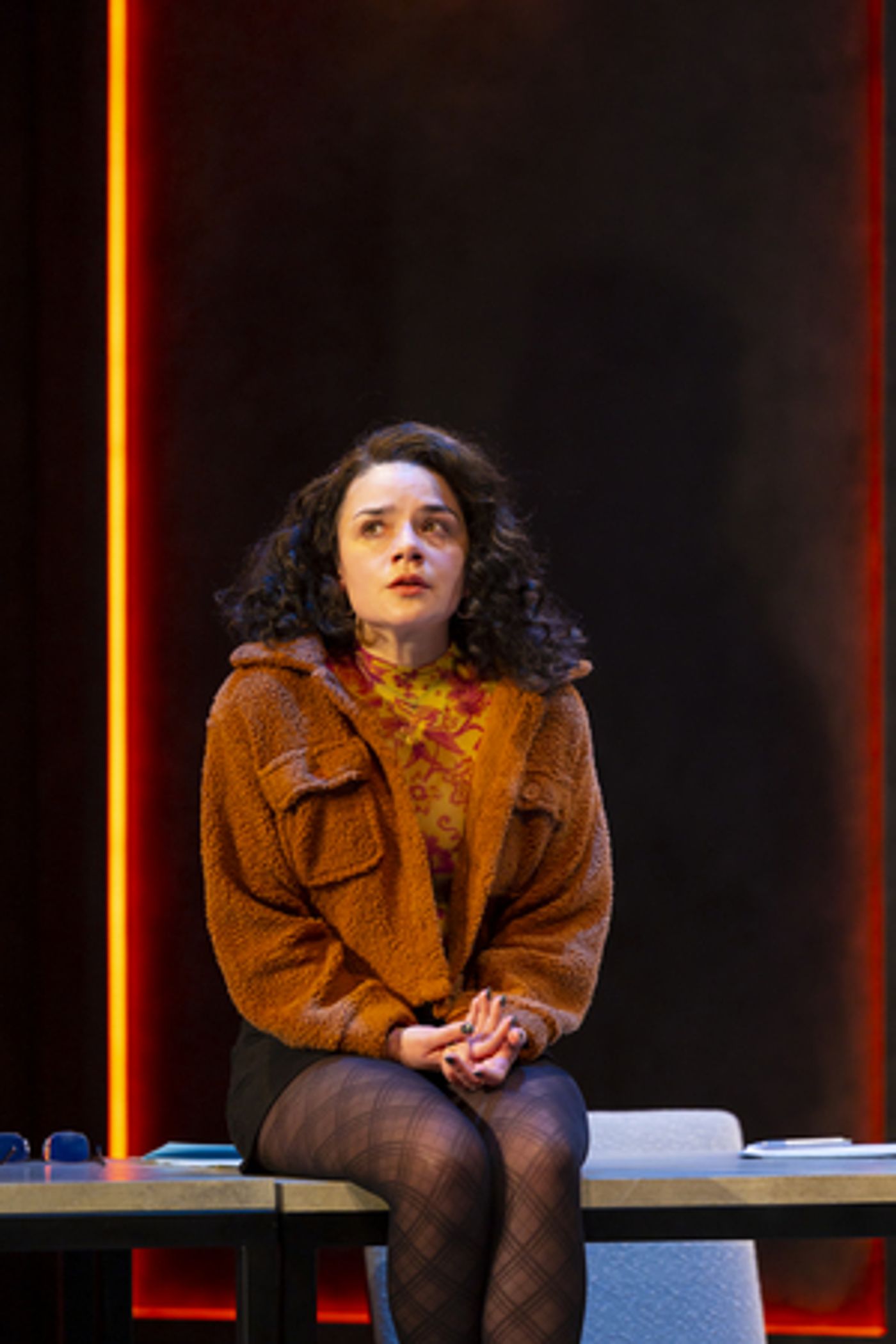Review: THE ART OF BURNING at Hartford Stage
Running at Hartford Stage through March 26


Kate Snodgrass' world premiere play, The Art of Burning, presented by Hartford Stage in association with Huntington Theater Company, is a disappointingly thin work, though the producing theaters are to be congratulated for supporting new scripts. The production itself, led by the sure hand of Hartford Stage Artistic Director Melia Bensussen, is well cast and fascinating to look at: Luciana Stecconi's scenic design creates an atmosphere of alienation, leaving the characters looking uneasy, often lost, and like chess pieces trying to defend their positions on a brutally cold board. However, the set is more original than the plot, which attempts to put a feminist spin on old themes: marriage is difficult; raising a child is even more difficult; affairs lead to thorny divorce settlements; and children get caught in the middle.
Snodgrass attempts to blow the dust off these themes by introducing what appears to be an unusually amicable split between Patricia and Jason and then, almost immediately, by giving Patricia a revelation that makes her re-think both their parenting of now teen-age daughter, Beth, and her previous agreement to share custody with Jason, despite his infidelity. After witnessing a production of Medea the night before she is to sign the divorce papers, she concludes that Medea's murder of her children was not simply to punish her philandering husband (also named Jason, of course), but mainly to save the young ones from a punishing world.
Patricia's interpretation is not, strictly speaking, wrong, as throughout history numerous readers and viewers have argued about Medea's motivations. But in failing to fully acknowledge and explore the underpinnings of such a view, Snodgrass creates the opposite impression of Patricia than she seems to intend. Patricia's insistence that she understands Euripides' play makes her appear naïve and self-serving, rather than insightful and learned. Proclaiming an opinion does not make it so.
For whatever reason, Snodgrass has chosen to work on the surface throughout, such that her play is structured around brief scenes set in the present, interlaced with brief scenes from the past. I'm not sure why so many contemporary playwrights feel that audiences must be given 90-minute plays, but often the character and plot development suffer. Were these scenes longer and more in depth, we would understand and sympathize with all the characters, discovering that they are complex and multi-faceted. Instead, they come across mainly as types. Beth, the daughter, beautifully played by Clio Contogenis, fares best. Rom Barkhordar, as Jason, has the least to work with, but he's clearly a strong actor and does what he can with the role, as does Vivia Font, as his lover.
Adrianne Krstansky's Patricia is difficult to pin down, and this may be the playwright's intent. However, since Patricia is at the center of the action, we need more insight into her as an artist, a mother, a wife, and a woman. As written, we rarely see Patricia reveal her vulnerabilities; instead, she is nearly always discordant and defensive.
The most surprising couple are, unfortunately, secondary to the main plot, and even their conflict is all too familiar. What makes their climactic scene memorable is the humor embedded in the heartbreaking situation, and the absolute commitment of the actors. Michael Kaye, as Mark, Jason's buddy, and the mediator of the divorce, perfectly conveys a corporate man who has completely bought into the expectations of conventional masculinity. And Laura Latreille is brittle, sensitive, and finally, hilarious, as she rips away years of lying to her husband and reveals her authentic self. I foresee that her monologue will become a popular audition piece.
Aja M. Jackson has lit the production with harsh hues from above and bisected the stage into glowing but forbidding squares-reinforcing the feel of a chess game. Kara Harmon's costume design captures the characters well, other than a problematic shirt for Patricia towards the end: the shirt is meant to signal a potential twist in the plot, but instead it gives away the outcome long before we are supposed to get there. Jane Shaw's original music and sound design give the play a stronger sense of foreboding than Snodgrass' writing does.
The Art of Burning doesn't yet succeed, but I hope that Snodgrass continues to expand it. There are fascinating images here, and if the main conflicts were more deeply explored and given unconventional textures, this play could become a compelling lens through which to look at situations and emotions that are, unfortunately, still all too common.
Photo Credit: T. Charles Erickson
Reader Reviews
Videos

